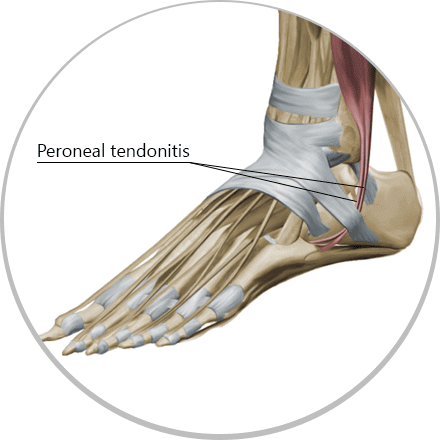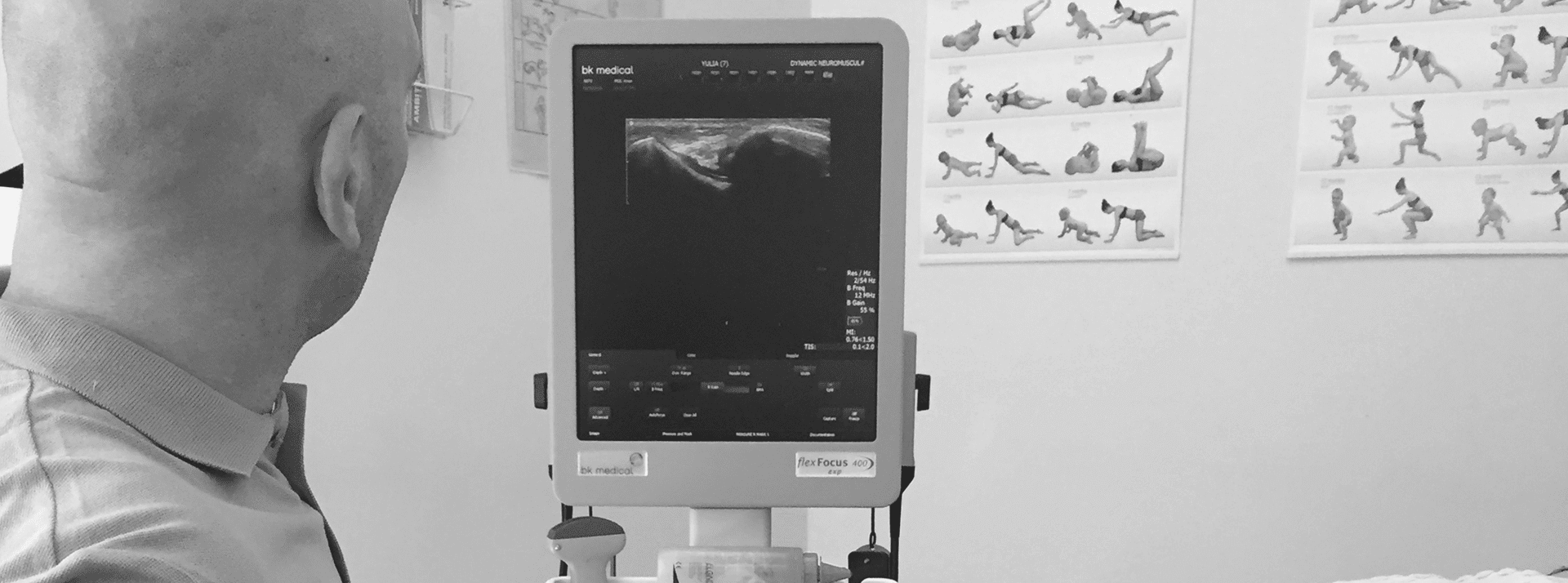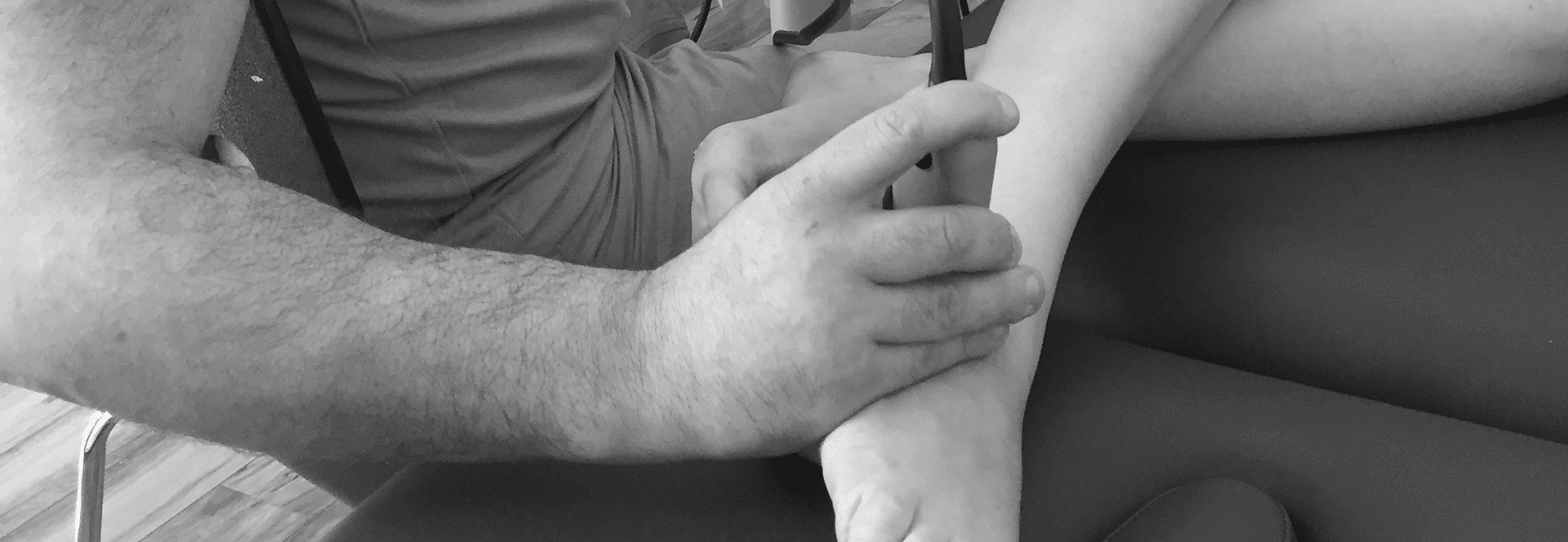Several conditions can mimic peroneal tendinopathy, so imaging with MRI or ultrasound is necessary to confirm it.
At NYDNRehab, we use diagnostic musculoskeletal ultrasonography (MSUS) to view the structures of the foot and ankle. Unlike MRI where the patient stays perfectly still and results take several days, MSUS lets us view the injured tissues with the patient in motion, so we can observe the mechanics of the foot in real time and get immediate results.
Our clinic has the most powerful research-grade ultrasound equipment available in NYC. In addition to viewing the body’s structures, it enables us to perform sonoelastography and superior microvascular imaging to further assess the degree of damage and healing.
With diagnostic MSUS, the patient becomes an active participant in the diagnostic process, repositioning the injured area for a more comprehensive view, and providing verbal feedback about which movements cause pain or discomfort. Both patient and practitioner are able to view the results on the monitor, and discuss the degree of injury as well as potential treatment.










































